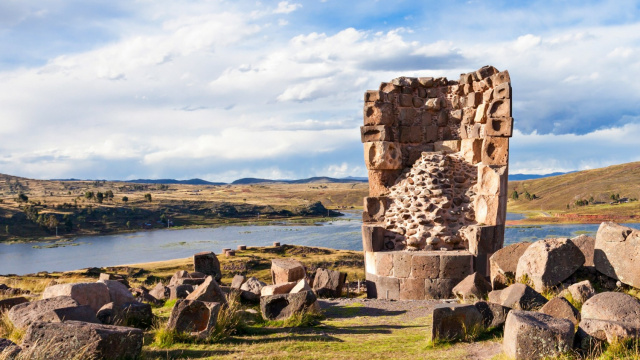Road trip in Peru, 15 April - 1 May 2025

Sillustani
In the heart of the Andean highlands lies Sillustani, an ancient burial site that serves as a remarkable testament to the ingenuity and spiritual beliefs of a long-lost civilization. This pre-Incan necropolis, famous for its towering cylindrical tombs known as chullpas, is a stunning example of architectural and cultural heritage. These imposing structures, some rising as high as 12 meters, were built by the Colla people, a powerful society that preceded the Inca Empire.
The chullpas are extraordinary for their intricate carvings and precise stonework, constructed using ashlar masonry—a technique where stones are expertly cut to fit together without the use of mortar. The most elaborate tombs were reserved for Colla nobility and their families, while simpler structures housed commoners. This careful stratification reflects the social hierarchy of the time.
The site’s location, perched on a hill overlooking the serene Umayo Lagoon, adds an aura of mysticism. The lagoon’s shimmering waters and surrounding landscape provide a breathtaking backdrop, enhancing the solemn beauty of the chullpas. The area is also rich in biodiversity, home to various bird species and the rare giant frog of Lake Titicaca.
Sillustani’s history is steeped in ritual and symbolism. The Colla people viewed these tombs as more than just burial sites—they were spiritual connectors between the living and the deceased. Bodies were placed in a fetal position, facing east toward the rising sun, symbolizing rebirth and a return to the womb of Pachamama, or Mother Earth. The tombs were sealed with a single carved stone door, often adorned with symbols representing power and social status.
Despite the ravages of time and the subsequent rise of the Incan and Spanish empires, Sillustani remains remarkably well-preserved. It offers a rare glimpse into the spiritual and societal practices of the Colla people, standing as a silent monument to their legacy. Visitors from around the world are drawn to Sillustani to admire its architectural marvels and immerse themselves in the history of a civilization that thrived in the challenging Andean highlands.



























